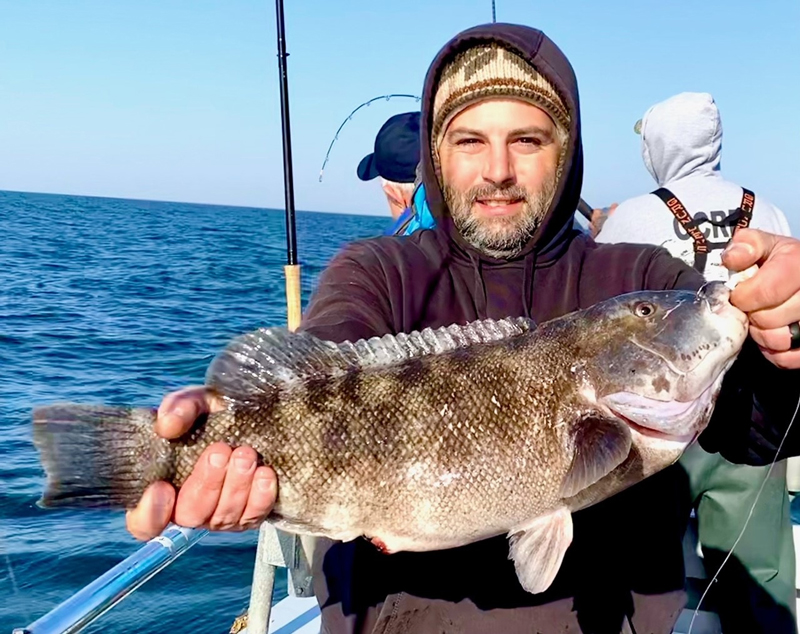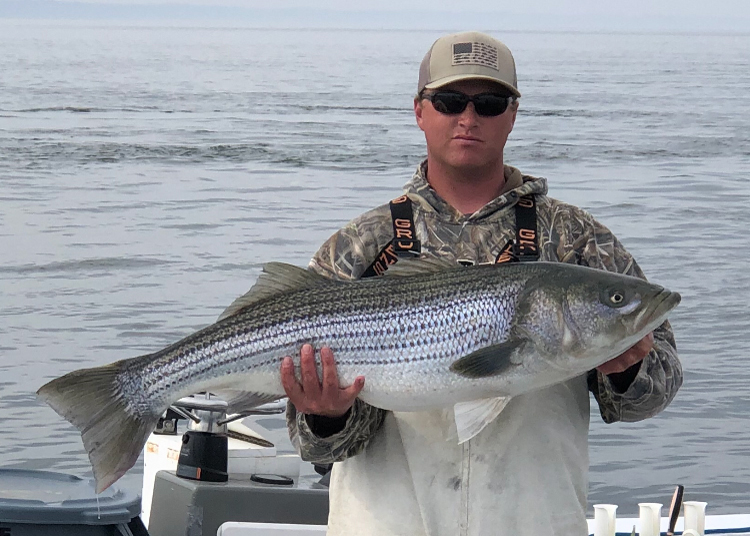Yes, you will have to time your trip in-between passing fronts, it may be frigid outside, and the potential for a skunk is always there even if you pony up and go on a charter fishing boat. No, March is not the hottest month of the year for saltwater fishing in this region of the world. But if you don’t go you won’t know — and sometimes preseason fishing trips turn out to be shockingly productive. You say you’re ready to bundle up and break that cabin fever? Here are five saltwater options that have serious potential this month.

CBBT fishing for tog. Early March is still early, mid-March is iffy, and late march things are just cranking up some years. But some others, it may be a great time for tog-hunting from the start of the month to the finish. The big variable is, of course, water temperature. If it’s over 40 degrees you have a prayer. If it’s in the mid-40s you have a reasonable shot. And if it’s in the upper 40s or into the 50s the possibilities are excellent. Stick with crab baits and while fiddlers may be prime, fresh anything beats frozen everything. Drop down right next to the pilings and rocks, and if you need a refresher on tackle and tactics check out the many tautog how-to articles here on the website.
CCNPP for catch-and-release rockfish. March can be a hot time to hit Calvert Cliffs, and see if you can hook one of the trophy-sized stripers that may be swimming in the warm water discharge. This means having access to a bay-worthy boat that isn’t winterized and putting up with conditions that can be brisk, to say the least, but the potential is there to battle 40-plus-inch fish. Boss BKDs and similarly large plastics fished on jigheads of an ounce or more are the norm, and remember to crimp the barbs and keep those big female fish in the water as you snap off a quick pic before releasing them as gently as possible. See “Fishing for Trophy Rockfish in Warm Water Discharges” to learn more about the specific tackle, tactics, and appropriate etiquette for fishing in these turbulent waters. Note that as of April 1 even catch and release for rock will be off-limits, so this option ends at the end of this month.

Coastal Bays for flounder. From OC down through all the coastal bays of the ESVA, the earliest of the flatfish generally show up well before most anglers target them. The exact date of their arrival is certainly in question, but generally speaking March begins without any action at all; the first reports begin trickling in during mid-March, and by the end of the month there are steady, verifiable flounder being caught. So, you may want to delay this trip until the second half of the month (assuming we don’t get a blast of summer-like sunshine early on), but waiting for April usually isn’t 100-percent necessary for success. Note that the bite will likely be a lot slower than you may be used to and a three-fish day should be considered a home run at this time of year. Still, if it’s nice out and you’d rather be afloat than afoot, you could be enjoying fried flounder long before all your fishing buddies do. Four- and five-inch Gulp! on a jighead bounced along the bottom will generally prove effective if the fish are in town.
Lynnhaven and Rudee Inlets for puppy drum. It’s never a sure thing at this time of year, but the redfish will almost certainly be rockin’ it at some point during March. The past few seasons they’ve been catchable at the beginning of the month and biting strong by the time April rolled around. Look to find them deep early in the day, and then moving out of channels and up over flats during sunny, water-warming afternoons. Plastics will get them biting but using live bait is a better bet, and if you get lucky you might also pick up a speck or two.
Wrecks and Reefs off the coast for tautog. We started off with tog and we’re wrapping up with this species, too. Once you get out to the wrecks and reefs 10-plus miles from the coast you’re usually in water deep enough that temperature isn’t an issue, and if tautog are present, they’ll bite. Maybe — this species is always finicky. That said, during the month of March your chances are as good as ever that dropping a crab chunk to the bottom directly on and in jagged structure will trigger those smashing bites.
Are any of these bites a sure thing? Heck no. But, do all offer up serious fish-catching potential? Heck yes. And at this time of year we’re all pretty desperate to get out and feel a bend in the rod. These five options all make it possible.